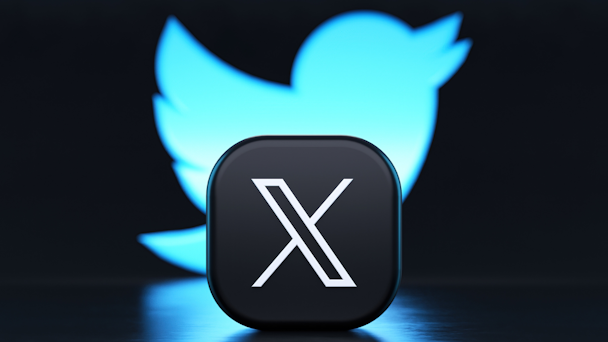Should brands ditch X as a customer service platform?
The platform formerly known as Twitter has long provided companies with a space to effectively field customer queries and complaints. Will that change as it morphs into X and tweeting leaves the vernacular? Most experts are doubtful.

The bluebird app changed its name to X last month. / Adobe Stock
From a customer service perspective, the rise of social media has been a significant blessing. For the first time, brands had access to platforms through which they could directly and quickly engage with a huge portion of their audiences.
But with great power comes great responsibility; the social media revolution has also delivered a commensurate uptick in brand accountability when it comes to customer service. Research from McKinsey has found that 79% of people who post a query or complaint directed to a brand on social media expect a response within 24 hours and that 81% of people who never receive a response won’t recommend that company to friends. (A bad customer service experience is also liable to be saved as a screenshot and reposted.)
Advertisement
Twitter has been an especially potent and popular platform for customer service. According to data from the company, 64% of users said that they’d rather contact a brand through their customer service handle than by calling them. A recent survey from software company Khoros, furthermore, found that 75% of respondents have used Twitter to interact with a brand, compared with 59% for Facebook and 34% for Instagram.
Now that Twitter has been rebranded to X, many marketers have likely been left wondering: is the platform still a reliable resource for customer service, or would it be better to redirect one’s efforts elsewhere?
Last month, 17 years after it was founded and less than one year after it was purchased by Elon Musk, Twitter changed its name to X. The transformation has left some feeling slightly bereft. “The recent rebranding has left both users and brands feeling a significant loss of trust,” says Anne Well, chief marketing officer of web3 company Galxe. “The abrupt manner in which Twitter rebranded to ‘X’...feels akin to small-scale robbery, leaving a bitter taste.”
The suddenness of the change, in Well’s view, coupled with Musk’s mercurial nature, could motivate some companies to sever ties with the platform as a customer service hub. “The lack of transparency and trust resulting from the rebranding may lead to brands reevaluating their use of X as a communication channel for reaching their customers,” she says. “Concerns about sudden changes and unpredictable actions by the platform run by a strong-minded entrepreneur could prompt brands to seek more reliable and stable alternatives for engaging with their audience.”
Advertisement
Others aren’t so sure. While the loss of the bluebird will undoubtedly take some getting used to, these experts contend, X is still more or less Twitter in all but name; the platform’s rebrand shouldn't necessitate a complete overhaul in a brand’s customer service strategy.
“X is still a place to reach people en masse, and it would be ignorant for brands to abandon customers on this platform because they like a bluebird better than the letter X,” says Dan Gardner, co-founder of Code and Theory. “Brands will always need to communicate where their audiences are. Twitter has been long utilized for customer service, and X won’t be any different.” (Gardner also notes the irony behind the fact that some brands, like Wendy’s, have been posting “snarky” remarks about the Twitter/X rebrand – on X.)
That’s his most expensive X yet
— Wendy’s (@Wendys) July 24, 2023
Experts also point out that even in the midst of Twitter’s transformation, the fundamental dynamics of customer service remain the same. Crucially, brands must be able to meet customers where they are. If, for whatever inexplicable reason, people were to suddenly stop using social media tomorrow and insist on only airing customer service complaints via carrier pigeon, brands would dutifully ditch their social media accounts and set up aviaries atop their headquarters. And if large numbers of people leave X for the sunnier shores of Threads, or whatever other platform, then brands will follow suit. If you believe Elon Musk, that hasn't been the case. Despite grim prognostications (an Insider Intelligence report from December, for example, predicted that Twitter would lose 32.7mn users by the end of 2024), a July 28 tweet from Musk featured a graph showing that X’s userbase had climbed to a “new high” of 542mn that month. Twitter had approximately 229mn users in May of last year, according to Reuters. (Not every chart, however, paints a positive picture about Twitter/X's engagement levels.)
monthly users reach new high in 2023 pic.twitter.com/trqLGBEvvA — Elon Musk (@elonmusk) July 28, 2023
For the moment, many onlookers say that brands should hold their ground. “Brand strategies shouldn’t change unless [customer] behavior changes,” says Erin Ledbetter, head of digital at Ketchum. “At this point, Twitter’s rebrand to X hasn’t amounted to much more than a logo update on the platform.”
Wunderman Thompson New York Executive strategy director Alex Willimott echoes this sentiment: “In customer service, brands will always need to be where their consumers expect to reach them,” he says. “For many brands, that means maintaining an active presence on X ... for now.”
While users wait and see what X becomes, many advertisers have already fled from the platform, fearing that much less stringent content moderation policies implemented under Musk’s leadership could lead to ads appearing alongside inappropriate content. Last month, responding to a tweet suggesting how X might strengthen its capitalization structure, Musk stated that the company is experiencing “negative cash flow, due to ~50% drop in advertising revenue plus heavy debt load.”
We’re still negative cash flow, due to ~50% drop in advertising revenue plus heavy debt load. Need to reach positive cash flow before we have the luxury of anything else.
— Elon Musk (@elonmusk) July 15, 2023
But even brands that have opted to stop advertising on X don’t need to throw out the customer service baby with the bathwater. “There has been a wide range of levels of divestment from [X] among our clients,” says Liz Cole, chief social officer at VMLY&R.
Suggested newsletters for you
“But even among those who have greatly reduced their activity [on the platform], managing inbound brand mentions and customer service inquiries remains important. I would expect this to continue until brands either remove themselves entirely from the [platform] – which comes with its own risks – or user activity comes to a near total halt.”
For more, sign up for The Drum’s daily US newsletter here.

